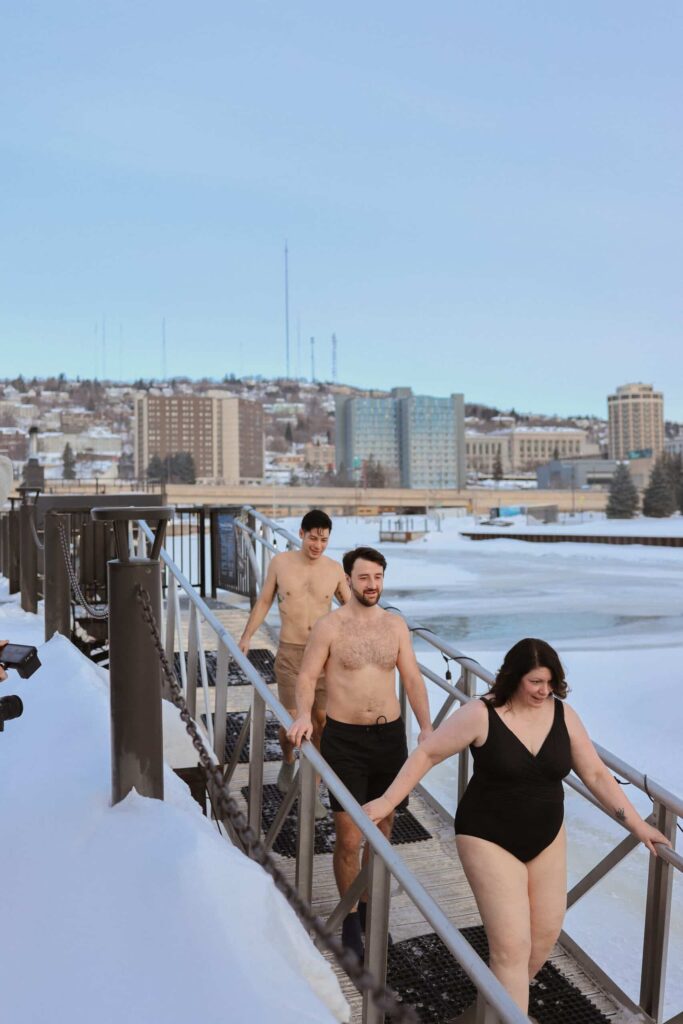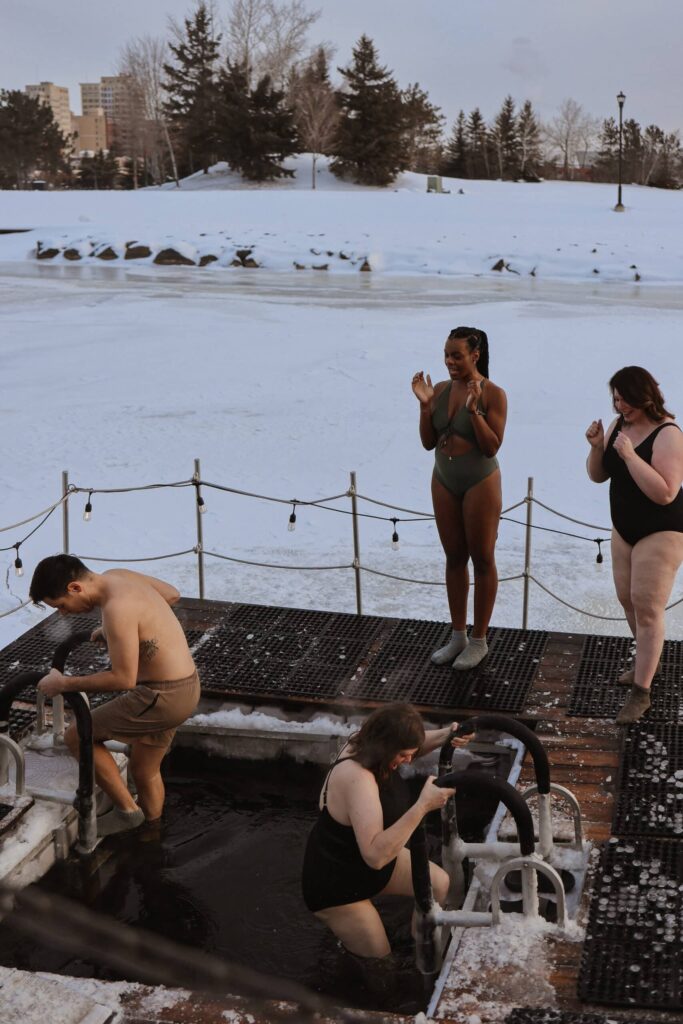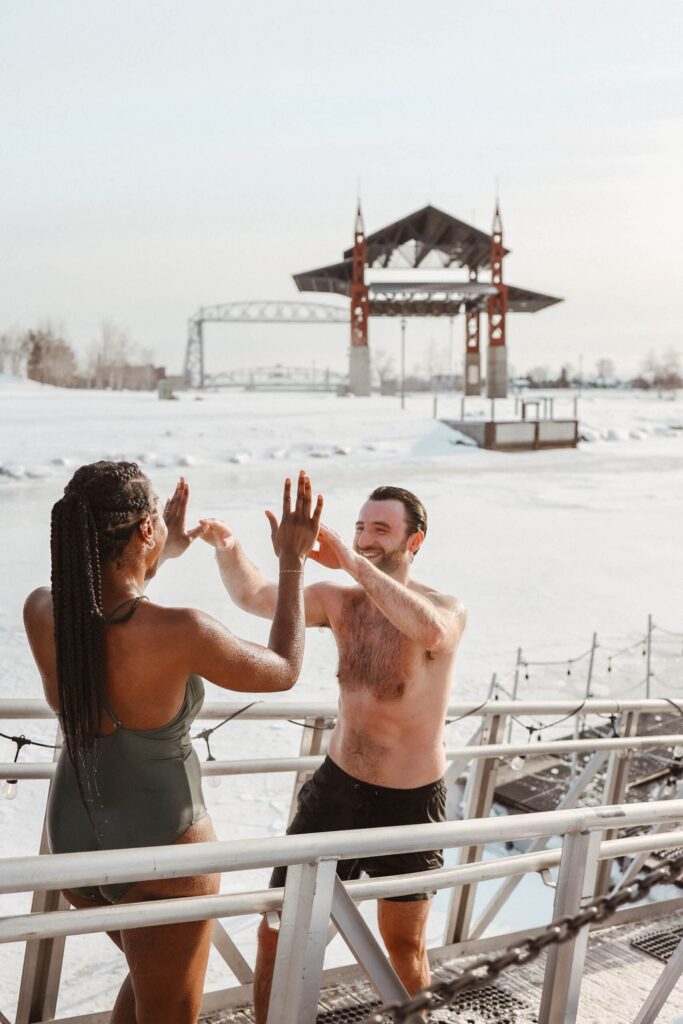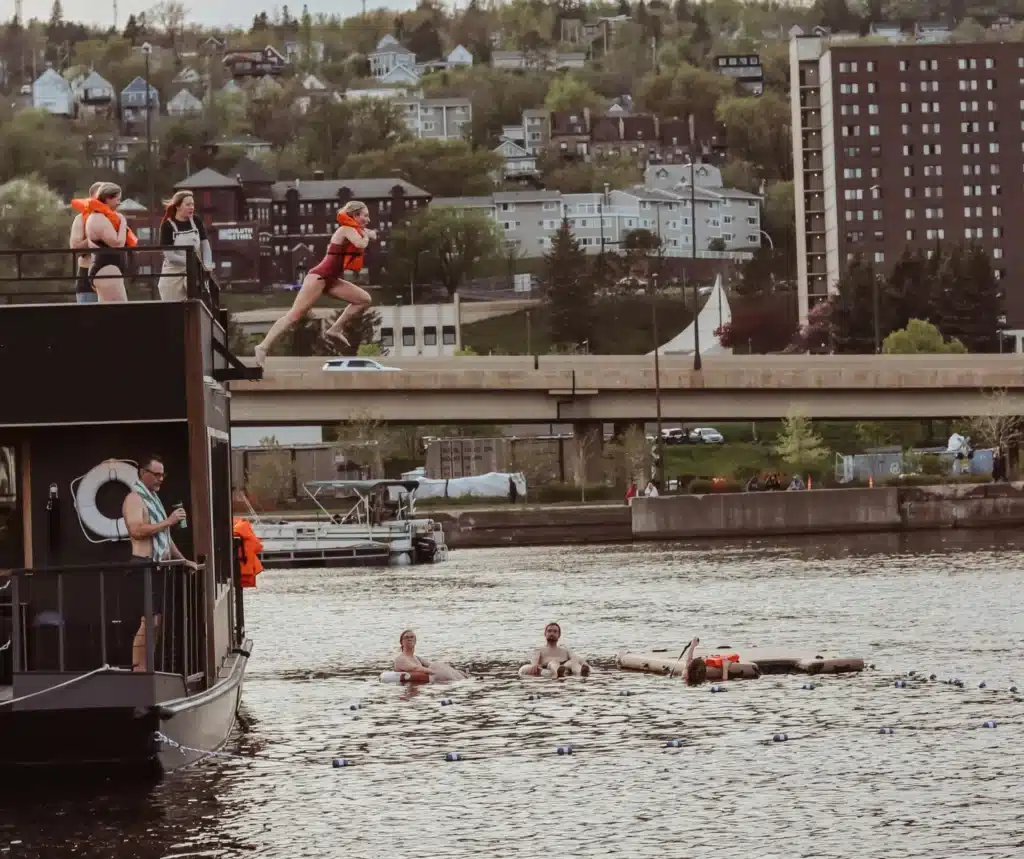Cold plunging is powerful. It clears the mind, boosts the body, and reconnects us to the present moment. But like any practice rooted in natural stress and recovery, it works best — and safest — when done with intention.
Whether you’re stepping into your first plunge or refining your routine, here are seven things to look for (and keep in mind) to ensure a safe, effective, and restorative cold plunge experience.
Watch our full video guide with Cedar and Stone Co-Founder Justin Juntunen (while he stands in 34°F water):
Considerations for Safe Cold Plunge
1. Water Temperature Matters
The ideal cold plunge temperature is between 45–55°F (7–13°C). This range activates the body’s thermoregulatory systems without pushing it into shock or extreme discomfort.
Anything colder can still be beneficial but should be approached with shorter durations and more caution. If you’re new to cold exposure, start on the warmer end of the range and gradually build your tolerance.
2. Safe Entry & Exit
Cold exposure affects muscle response and motor control, so safe design is essential.
A well-built cold plunge should have steps, a ladder, or handrails to support easy entry and exit. This reduces the risk of slipping and makes the experience more accessible for all bodies and abilities.
3. Clean, Filtered Water
The water may be cold, but it still needs to be clean. Look for a plunge that includes proper filtration and circulation systems — especially in public or shared spaces.
Clear water is a sign of care and safety. If it looks murky or stagnant, it’s best to pause.
4. Time is a Tool
Cold plunging isn’t about pushing limits, it’s about building resilience with awareness.
We recommend starting with 30 seconds to 3 minutes, depending on your experience level and the water temperature. Use a timer, listen to your body, and know that shivering or numbness is a signal to exit and warm up.
5. Breathwork is Your Anchor
Your breath is your most powerful tool in cold exposure.
Before entering, take a moment to slow your breathing. Once in the plunge, deep, steady breaths help regulate your nervous system and prevent the “gasp reflex” keeping you calm and present.
A good cold plunge space supports this pause. It’s not a race; it’s a ritual.
6. Warming Up Matters
Recovery is part of the practice.
After the plunge, it’s essential to gradually bring the body back to a comfortable temperature. This might look like stepping into a nearby sauna, wrapping in warm robes, or simply moving indoors to rest.
Look for setups that make warming up part of the experience, not an afterthought.
7. Choose an Encouraging Atmosphere
A safe cold plunge space isn’t competitive. It’s supportive, unhurried, and welcoming to all levels.
Whether you’re dipping a toe or submerging fully, the goal is connection — not endurance. Spaces that prioritize presence over performance are where real transformation happens.



Ready to Experience It for Yourself?
At Cedar and Stone Nordic Sauna, we believe that shared experiences can enrich your well-being.
We draw on scientific research and cultural traditions, ensuring that every session is backed by proven benefits while honoring the rich history of sauna practices. Located in Duluth and Minneapolis, Minnesota, we offer guided sauna sessions that transform the traditional sauna experience into a holistic wellness ritual.
We also host a monthly Community Cold Plunge event that exists for folks looking for a place to safely cold plunge and meet some new friends. This is wonderful for all ages, bodies, and levels of experience. During your 45-minute session you will have access to our Harborside Cold Plunge, wood fired and electric saunas, and outdoor deck.
